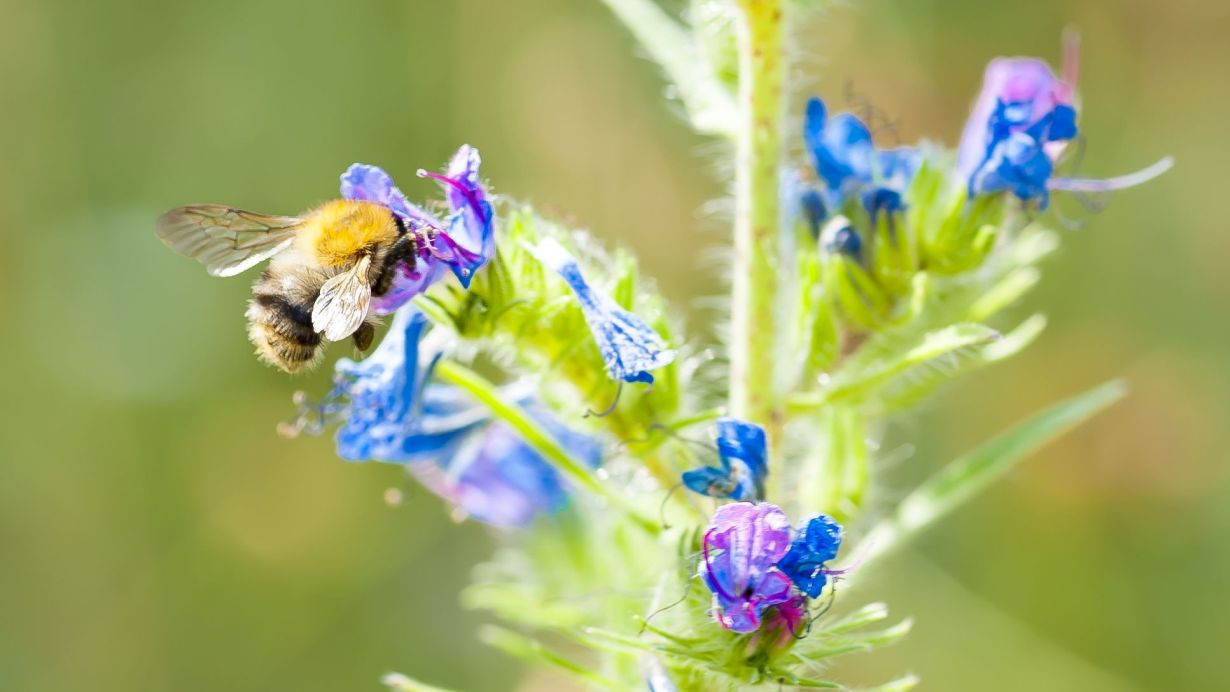Climate change, together with the intensive use and destruction of natural ecosystems, has triggered an unprecedented, progressive loss of species. Often, however, the climate and biodiversity crises are treated as separate catastrophes. An international team of researchers, including the Karlsruhe Institute of Technology (KIT), is now calling for a rethink: In their review study published in the journal Science, they emphasize the urgency of staying as close as possible to the 1.5-degree target and support, among other things, the plan to place at least 30 percent of land, freshwater, and ocean areas under protection. (DOI: 10.1126/science.abl4881)
The man-made climate crisis has consequences for the entire planet – for example, the distribution of precipitation is shifting, global sea levels are rising, extreme weather events are becoming more frequent, and the oceans are increasingly acidifying. At the same time, the loss of animal and plant species is progressing worldwide.
“It is imperative that we think of climate protection and species conservation together. Because measures that focus solely on climate protection, for example, may well have a negative impact on biodiversity,” says co-author of the study Professor Almut Arnedt from the Institute of Meteorology and Climate Research – Atmospheric Environmental Research, KIT-Campus Alpin in Garmisch-Partenkirchen. “Both systems only work together. Healthy ecosystems rich in species and functions, for example, contribute a lot to mitigating climate change.”
According to the review study, human activities have severely changed about 75 percent of the Earth’s land surface and 66 percent of its ocean areas. Habitat destruction and overexploitation have put more species at the risk of extinction than at any time in human history, a situation further exacerbated by climate change. Warming and destruction of natural habitats also reduced the carbon storage capacities of organisms, soils, and sediments, which in turn exacerbated the climate crisis, the researchers say. Because organisms have certain tolerance windows for environmental conditions such as temperature, species’ habitats are shifting or disappearing altogether as a result of global warming.
Renaturation Reduces Species Extinction and Binds CO2
To address the climate and biodiversity crises, the researchers propose a package of actions including emission reductions, renaturation and conservation measures, smart management of useful areas, and cross-institutional competencies in policy. “At the top of the priority list, of course, remains the massive reduction of greenhouse gas emissions and meeting the 1.5-degree target,” says Professor Hans-Otto Pörtner of Alfred Wegener Institute, Helmholtz Center for Polar and Marine Research and lead author of the study. In addition, at least 30 percent of land, freshwater, and ocean areas would have to be placed under protection or renatured in order to prevent the greatest biodiversity losses and maintain the functionality of natural ecosystems. He says this also helps in the fight against climate change. “The actual implementation of the Kunming-Montreal Protocol on the protection of biodiversity, which was adopted before Christmas 2022, is therefore just as high a priority as the Paris Climate Agreement,” emphasizes Arneth.
According to the study, extensive renaturation of just 15 percent of the areas converted to farmland could be enough to prevent 60 percent of the extinction events still to be expected. In addition, this could remove up to 300 gigatons of carbon dioxide from the atmosphere in the long term and bind it, which would correspond to 12 percent of the total carbon emitted since the beginning of the industrial age.
Sustainable Measures Conserve Resources, Secure Food Supply, and Enhance CO2 Uptake
Furthermore, the authors of the study suggest that protected areas should not be seen as isolated rescue islands for biodiversity, but rather as part of a network that connects areas with near-natural wilderness via migration corridors. Indigenous societies, in particular, must be involved in conservation management and receive government support. In agriculture and fisheries, the aim is to use land in a sustainable way that conserves resources and secures the food supply. Concepts that lead to increased carbon dioxide absorption and carbon sequestration in biomass and soils are to be preferred. At the same time, it is important to create refuges for species that make yields possible in the first place, such as insects that pollinate fruit trees. Finally, the researchers believe that improving the carbon dioxide balance in cities should be an absolute priority.
The study concludes that to achieve the global biodiversity, climate, and sustainability goals planned for 2030 and 2050, climate protection, biodiversity conservation, and social benefits for the local population must be thought together in all measures.
The study is the result of a workshop jointly conducted by the Intergovernmental Science-Policy Platform on Biodiversity and Ecosystem Services (IPBES) and the Intergovernmental Panel on Climate Change (IPPC), both also known as the “World Biodiversity Council” and the “Intergovernmental Panel on Climate Change.”
Original Publication
H.-O. Pörtner, R. J. Scholes, A. Arneth, D.K.A. Barnes, M.T. Burrows, S.E. Diamond,
C.M. Duarte, W. Kiessling, P. Leadley, S. Managi, P. McElwee, G. Midgley, H.T. Ngo, D.
Obura, U. Pascual, M. Sankaran, Y.J. Shin, A.L. Val: Overcoming the coupled climate and biodiversity crises and their societal impacts. Science, 2023. DOI: 10.1126/science.abl4881
https://doi.org/10.1126/science.abl4881
Details about the KIT Climate and Environment Center
In close partnership with society, KIT develops solutions for urgent challenges – from climate change, energy transition and sustainable use of natural resources to artificial intelligence, sovereignty and an aging population. As The University in the Helmholtz Association, KIT unites scientific excellence from insight to application-driven research under one roof – and is thus in a unique position to drive this transformation. As a University of Excellence, KIT offers its more than 10,000 employees and 22,800 students outstanding opportunities to shape a sustainable and resilient future. KIT – Science for Impact.

